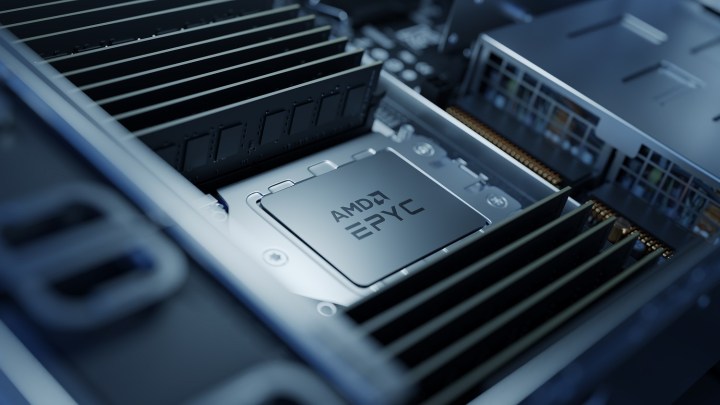AMD just picked up a big win. Cloudflare, one of the largest networks powering the internet today, announced that it will continue using AMD’s Epyc server CPUs instead of Intel Xeon for its next generation of servers. For these new servers, Cloudflare is moving from second-generation Epyc Rome processors to third-generation Epyc Milan processors.
In a blog post describing the testing processor, Cloudflare’s Chris Howells said that the competing Intel chips “did not meet our requirements.” Cloudflare tested Intel’s Ice Lake Xeon processors against the latest AMD Epyc chips and found that the power consumption was just too high.

“Although Intel’s chips were able to compete with AMD in terms of raw performance, the power consumption was several-hundred watts higher per server — that’s enormous,” Howells wrote. The blog post also described Intel’s performance per watt as “unattractive.”
Cloudflare switched to AMD chips with its 10th generation of servers. Previously, the company used dual-socket systems with two Xeon processors. In 2020, it switched to single-socket systems using AMD Epyc, which it’s continuing to do with the 11th-generation servers.
Although Cloudflare is announcing the switch now, the company has been working on the new servers since mid-2020. The network touches over 200 cities around the world, so as Howells writes, “it’s essential to get things right the first time.” The new servers are being updated with the 64-core AMD Epyc 7713 CPU, over the 48-core Epyc 7642.
Cloudflare noted a 29% increase over the last-generation chip, while consuming about the same amount of power. The new servers are getting a few other updates as well, including two 2TB SSDs instead of three 1TB SSDs, as well as 384GB of DDR4-3200 memory rather than 256GB of DDR4-2933.
Although AMD won this generation of servers, that could change. Intel’s Ice Lake Xeon platform is a few years old, and the company is working on its next-generation Sapphire Rapids platform for 2022. The upcoming chips will be built using Intel 7, which is the same manufacturing process behind Intel’s upcoming Alder Lake processors.
Intel has struggled to maintain its lead in the desktop and server market over the last few generations, largely due to high thermal and power requirements. Alder Lake and Sapphire Rapids feature a smaller manufacturing process, which should help with thermal and power demands.
However, numerous delays have brought the new manufacturing process into question. Sapphire Rapids chips are planned for use in the Aurora supercomputer at the Argonne National Laboratory. If they hold up, maybe we’ll see Intel show back up in the data center.
Right now, AMD is making inroads into that space. The Epyc processors largely mirror Threadripper processors seen on high-end desktops like the Lenovo P620, boasting high core counts with relatively low power demands.




